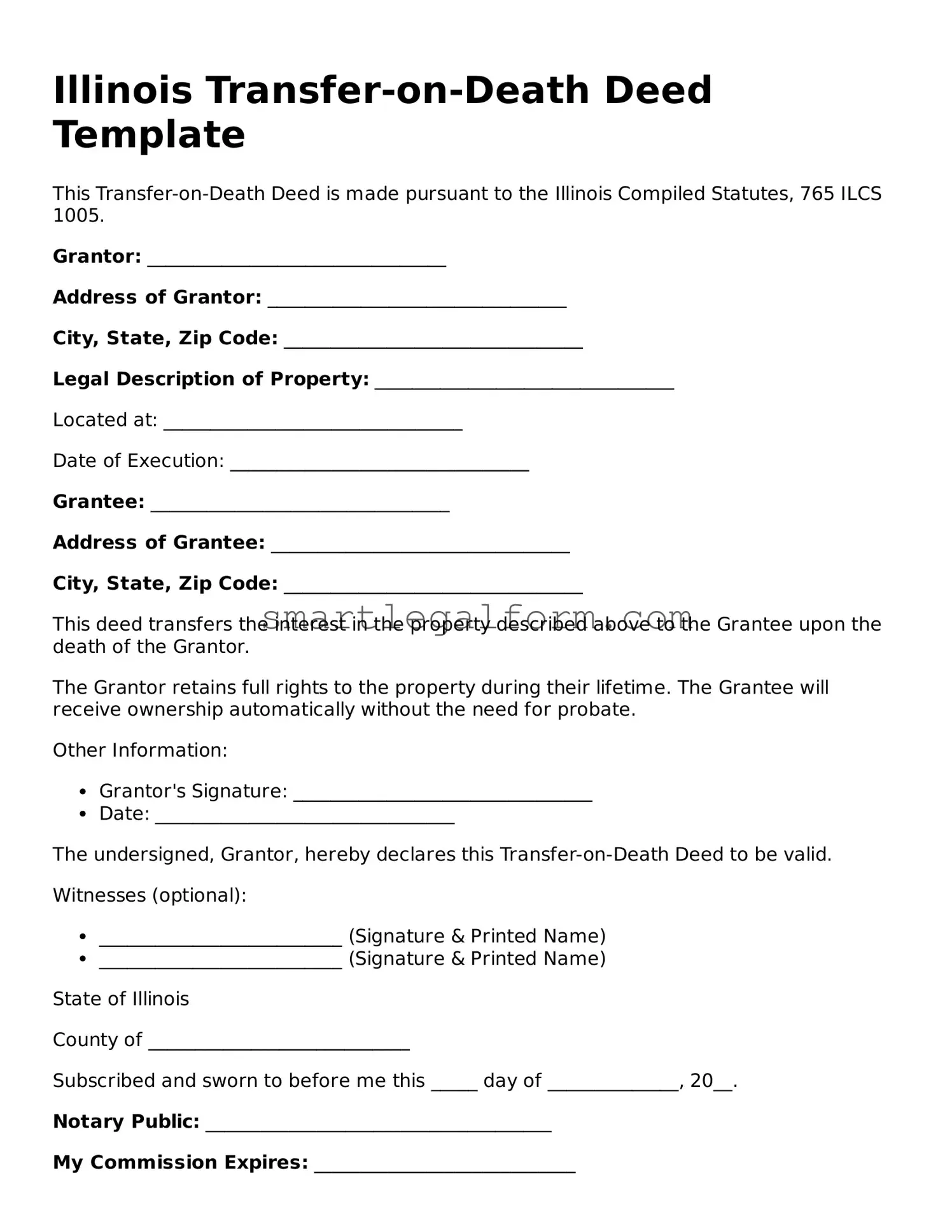Illinois Transfer-on-Death Deed Template
This Transfer-on-Death Deed is made pursuant to the Illinois Compiled Statutes, 765 ILCS 1005.
Grantor: ________________________________
Address of Grantor: ________________________________
City, State, Zip Code: ________________________________
Legal Description of Property: ________________________________
Located at: ________________________________
Date of Execution: ________________________________
Grantee: ________________________________
Address of Grantee: ________________________________
City, State, Zip Code: ________________________________
This deed transfers the interest in the property described above to the Grantee upon the death of the Grantor.
The Grantor retains full rights to the property during their lifetime. The Grantee will receive ownership automatically without the need for probate.
Other Information:
- Grantor's Signature: ________________________________
- Date: ________________________________
The undersigned, Grantor, hereby declares this Transfer-on-Death Deed to be valid.
Witnesses (optional):
- __________________________ (Signature & Printed Name)
- __________________________ (Signature & Printed Name)
State of Illinois
County of ____________________________
Subscribed and sworn to before me this _____ day of ______________, 20__.
Notary Public: _____________________________________
My Commission Expires: ____________________________
